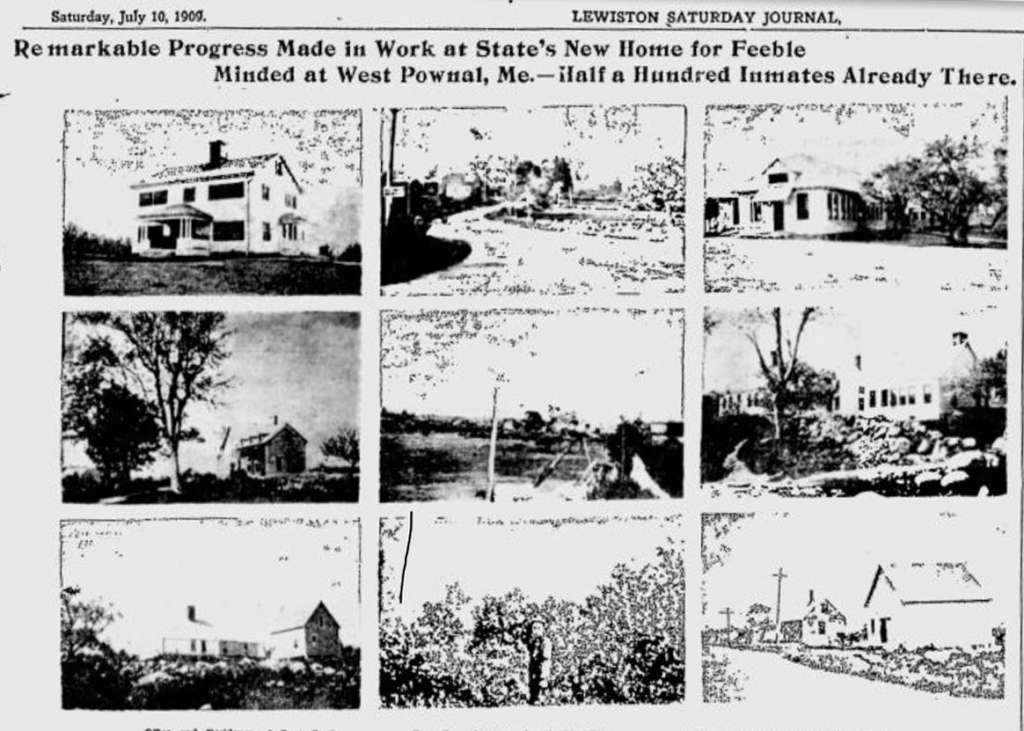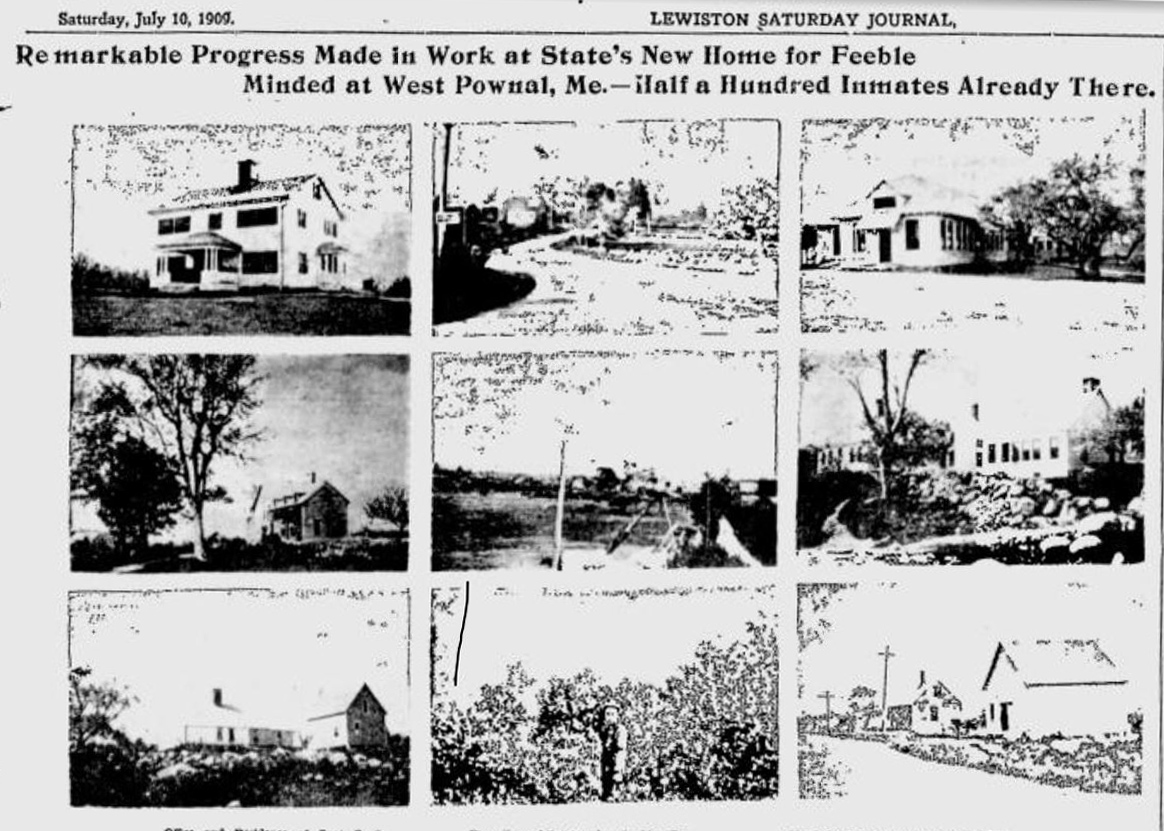“Remarkable Progress Made In Work At State’s New Home for Feeble Minded at West Pownal,” a newspaper headline announced on July 10, 1909.

A dormitory for 50 boys and another for girls had been added to the 1,300-acre Hill Farm that was the center of the new institution that would improve the “deplorable condition of the feeble minded” in Maine. In order to ensure that there was no chance for the residents to produce children, the sexes were strictly segregated. Female residents were housed at one farm, and males at another. They were also separated in work and in recreation or social activities, a practice that would continue into the 1970s.
Dr. George S. Bliss, the superintendent, told the reporter that “educational work is relegated to the future.” For the present, the boys would do farm work and the girls sewing and other domestic chores – largely unpaid labor to keep the new facility operating. Since budgets and the number of employees didn’t keep pace with the growth of the school, the rapidly growing facility depended on the unpaid labor of residents
Some of the “boys” and “girls” were over age 30; the youngest was 10. All of the residents were known as children, regardless of age. The most capable “working boys “ worked in the gardens and farms while the “working girls” worked in the dormitories, kitchen, and laundry. Bliss said that few of the inmates “could be taught to look out for themselves on their own initiative,” but nevertheless might be greatly improved.
![Lewiston Journal, November 9, 1912 Partial Clipping from the November 9, 1912 Lewiston Journal. Headline: Maine’s Home for Feeble-Minded: Has Been Open Only Since 1908, But is Prosperous and Fills a Long-Felt Need – How Pownal Was Chosen for Location of Home – Dr. Bliss’ Work With the Feeble-Minded – They Are Here Developed by School, Manual Training and Out-Door Occupations. Body (cut off): First column: {Written for Lewiston Journal} Did you ever visit a home for the feeble minded? Well, the very name is suggestive and the sight is even more impressive. It is pathetic, and for the time being grave doubts of the advancing wave of humanity sweep into the mind, but a moment’s reflection [cut off]… Second column: …as the options had been secured the committee, accompanied by Gov. Cobb, visited the place and one and all expressed themselves as being reasonably well pleased with the location. The options that had been secured covered the Andrew J Morse farm of 125 acres, the BA Shailer farm, 125 acres, Jubez Merchant place, 175 acres, Serena Gould farm, 175 acres, Sarah [cut off]… Third column: …could be utilized, and for running expenses. The first Board of Trustees, composed of H.C. Baxter (chairman), Albert Peirce, W.G. Means, C.N. Blanchard, and Mrs. Margaret Barker was appointed June 22, 1908; and the present board is the same, excepting the Oramandel Smith has succeeded Mr. Peirce, who resigned. Work was [cut off]…](https://shadowsofpineland.org/wp-content/uploads/2021/07/1912-Lewiston-Journal-1024x523.png)

